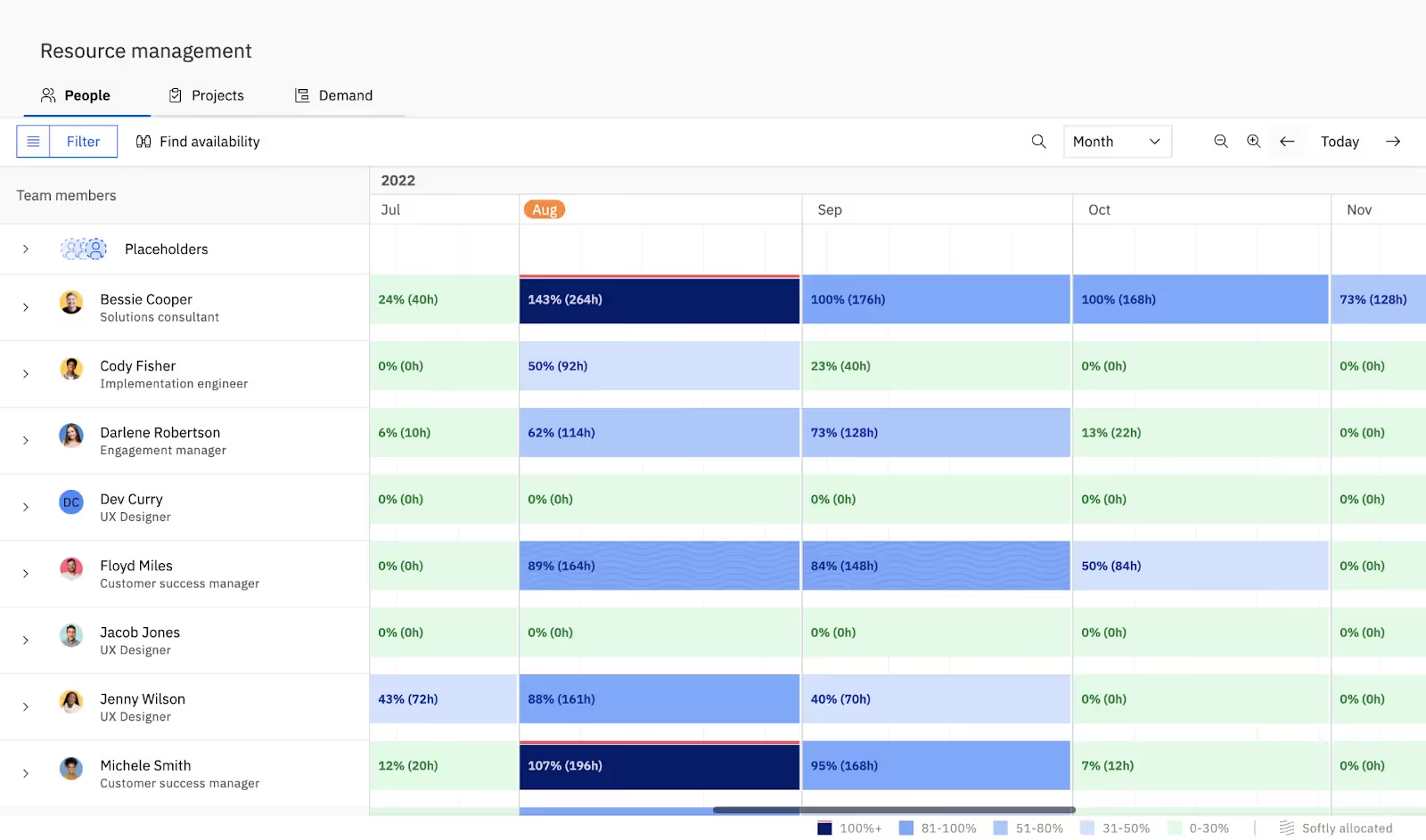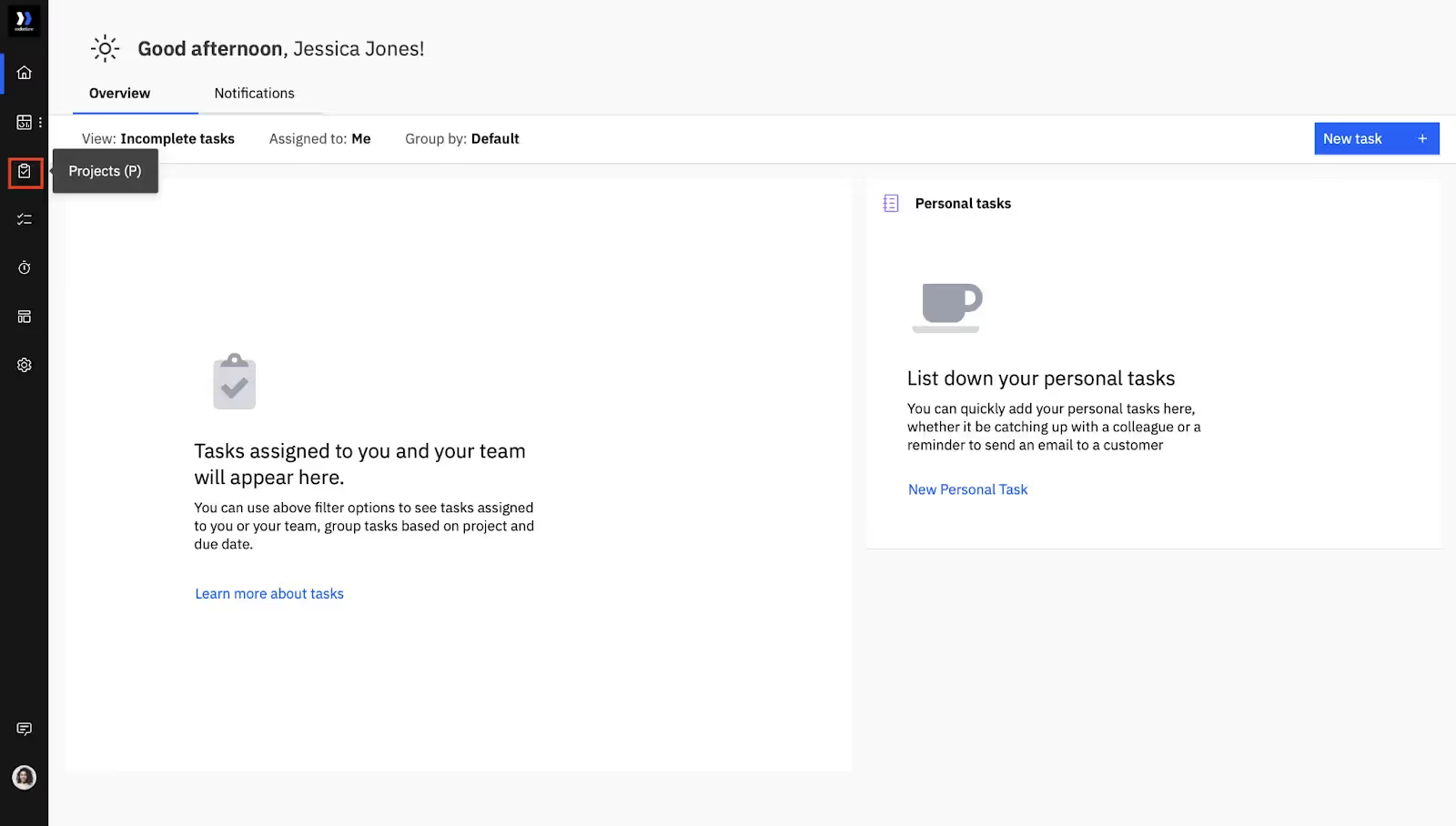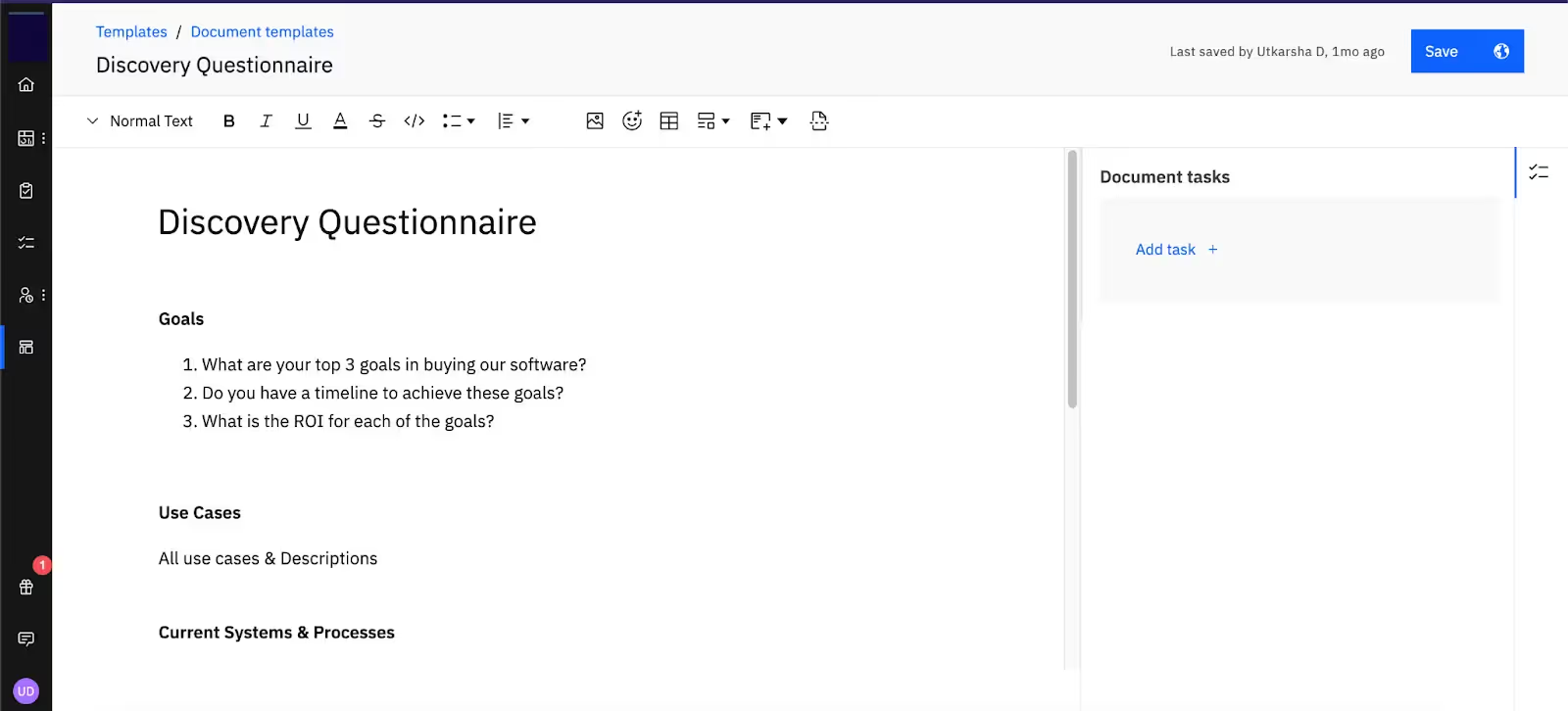Client onboarding is the process of helping new clients get the most out of your service, so they have a satisfying experience from the start.
It involves:
- Welcoming the client.
- Understanding their goals and challenges.
- Briefing them on how your agency will tackle these challenges.
With solid client onboarding experience, you earn the client’s trust and give them the confidence to choose your service.
In fact, according to a Wyzowl survey, a whopping 86% of customers are likely to stay loyal to a business that provides onboarding content to educate and welcome clients after a deal is closed.
Wondering how to create a seamless client onboarding process?
In this article, we’ll dive deeper into what client onboarding is, including the eleven fundamental steps and ten best practices involved in this process.
Additionally, we’ll highlight two outstanding examples of client onboarding processes and a dynamic tool that can make it all happen.
Let’s go!
What is client onboarding?
Client onboarding is all about setting a new client up for success and making sure that the project is executed as smoothly as possible.
It involves compiling client details, noting project expectations, scheduling introductory calls, employing work collaboration tools, and more.
Client onboarding is the key to forming a long-lasting client relationship.
It allows you to resolve your client’s doubts and communicate the next steps and plan of action for project management.
Still wondering why an effective client onboarding process is necessary?
Why is a solid client onboarding process so important?
Your long-term relationship with the client depends on how seamless their initial experience is.
A good client onboarding strategy ensures that the client’s journey with your agency begins on a positive note and paves the way for a long-standing partnership.
This is how client onboarding can help agencies build a strong client relationship:
- It lowers churn rates: A good client onboarding process improves client satisfaction, and satisfied clients are less likely to abandon you halfway through their experience. So, solid onboarding lowers the client churn rate for your business.
- It reduces client complaints: When the client’s expectations are straight from the beginning, they will have fewer complaints. And reduced client complaints can lower customer service costs and improve the client experience.
- It encourages word-of-mouth marketing: When clients are impressed with your work, they’re more likely to refer you to others. If you meet and surpass your client’s expectations, they’ll share the success story with the world, bringing more work opportunities for you.
- It offers cross-selling and up-selling opportunities: Reports reveal that 58% of customers are willing to pay more for better customer service. This means you have a better chance at cross-selling or up-selling your services to a client who had a good onboarding experience with your agency.
Now, you may ask:
How do I execute a smooth client onboarding process?
11 Crucial steps for successful client onboarding
The best way to approach onboarding is to have a consistent process and a checklist of steps that you can execute with each client.
Here are a few key steps your agency should follow:
1. Understanding client goals and deciding on deliverables
Discuss your client’s big-picture ideas for the first campaign or project.
Identify the client’s goals to implement the right steps for a successful outcome. You need to find the right balance between what the client wants to achieve, the financial, technological and human resources at their disposal, and what your team can deliver.
Consider this a pre-onboarding discussion where you gather relevant details about the point of contact, budget, and tentative timelines, so there’s no miscommunication later on.
2. Finalizing the contract
Draw up a contract highlighting your services, scope of work, billing details, and other terms.
A signed contract usually ensures that the client sticks to their end of the agreement. It highlights the scope so that both parties stay on the same page through all stages of project management.
3. Assigning a team
Build a dedicated team that helps your client during onboarding and with challenges that arise as the project progresses.
Having a single point of contact (SPOC) facilitates clear communication. If the team member with whom the client shares information or feedback keeps changing, it will probably lead to communication gaps and project delays.
Ideally, the onboarding team should include the following roles:
- Account Manager
- Project Manager
- Customer Service Executive(s)
- Other specialists as deemed necessary
Check out how Rocketlane helps you assign different roles to members in your onboarding team!

4. Inviting them to your client onboarding software
Add your new customer to a dedicated client onboarding software like Rocketlane.

Dedicated client onboarding software like Rocketlane allows you to manage all your project management, documents, and communication in a single place.
No need to struggle with a dozen tools to manage the client’s project!
This way, clients can easily collaborate and provide feedback on ongoing projects and campaigns. Additionally, they can access reports and analytics for performance reviews.
The Account Manager should provide clients with a walkthrough, showing them how to use the tool and share the product demo, the onboarding document, training manuals, etc.
5. Sharing an onboarding questionnaire
To create an excellent client experience, you need to clearly understand your client's goals, challenges, expectations, and brand guidelines.
That’s where the onboarding questionnaire comes in. The purpose of this questionnaire is to cover what wasn’t gathered during the sales phase.
Revisit the information you already have, find the gaps in this data, and frame questions around them to better understand the client's needs.
You can have business-specific questions for the client, like:
- What metrics are you looking to track/measure?
- What can we do to ensure a delightful customer experience?
And project-specific questions like:
- Who is the primary point of contact?
- Do you have a steering committee?
The answers will help you frame a client success strategy that aligns with their requirements and existing processes.
Here’s an example to give you an idea of what a client onboarding questionnaire would look like. You can add more questions depending on the type and amount of information you need:

6. Sending a Welcome Package
The welcome package is a set of documents, emails, or messages that you customize for your client. It highlights your mission statement, services, work processes, communication preferences, and so on.
This welcome email aims to communicate the terms of the agreement, so you set healthy boundaries and expectations from the get-go.
Ideally, your welcome email or package should include:
- Details about the assigned team
- Client goals you aim to accomplish
- The tools, services, and solutions you’ll offer
- The client's role in the project
- Key deliverables and estimated timelines
- Fixed meeting schedules
7. Scheduling a kickoff meeting
The kickoff meeting sets the tone for your relationship with the new client.
Use this opportunity to discuss the work approach and methodologies you will implement to accomplish the client's goals.
Answer their questions about your marketing or content technology stack.
Discuss the next steps and project milestones. Your team should prepare well for this meeting as it’s critical for making a lasting impression.
Finally, document every project requirement that you discuss during this meeting to avoid scope creep later.
Here's a video guide on how to ace your kickoff meetings:
8. Agreeing on success metrics and milestones
Your client may want to track success metrics like:
- Their average increase in customers
- Their daily/weekly/monthly revenue
- Their overall social media performance
Remember – these metrics will differ from client to client.
Additionally, identify milestones that help you monitor deadlines, fix important dates, and recognize potential bottlenecks within the project. It empowers your team by enabling everyone to view progress and judge priorities.
Most importantly, it shows your stakeholders your progress at a level they’re interested in.
9. Setting action items for both parties
Both you and the client have to work in tandem to deliver content and collateral and make the campaign a huge success.
Discuss and document everything that’s required for successful project management, from human resources to marketing resources to firm deadlines. This will help both sides stay aware of what’s needed from either of them as the work progresses.
10. Creating a service level agreement (SLA)
A service level agreement (SLA) is a contract that establishes a set of deliverables that your agency has agreed to provide to the client.
An SLA is essential in ensuring both parties are on the same page in terms of work quality and service. It can help you avoid misunderstandings about the results delivered.
The absence of SLAs can lead to missed KPIs and dissatisfied clients, increasing the client churn rate.
11. Checking in after 30 days
Are the processes being implemented as discussed during the client onboarding meeting?
Is the client service team engaging with the client effectively?
Schedule a check-up call 30 days after beginning to work with a client to get answers to these questions. The call helps ensure that nobody has dropped the ball during the new client onboarding process.
Catching and fixing mistakes early reduces the possibility of client churn and enhances the client experience.
Using a client onboarding checklist makes you less likely to lose the client you worked so hard to earn.
And if you want to increase their lifetime value, consider incorporating the following best practices.
{{demo}}
10 Best practices for smooth client onboarding
Keep the following tips in mind to implement a successful client onboarding process:
1. Understand your client’s singular pain points
Your sales team should identify the client’s key challenges to tailor their pitch and present your service as the befitting solution.
For example, if your client does not have internal resources to quickly execute frequent website updates, highlight how you could offer ongoing maintenance services.
2. Set an internal pre-kickoff meeting
Make sure every team member who attends the kickoff meeting with the client is well-aware of the agenda and well-versed with the onboarding workflow.
An internal meeting prior to the actual onboarding meeting helps team members come to a consensus on the key discussion points.
You can also prep for the expected questions from the client side and the appropriate responses to elevate client satisfaction.
3. Deliver a smooth handoff
A smooth handoff from the sales team to the client onboarding or customer success team is the backbone of a good client onboarding process.
The sales team should share all client-related knowledge gathered during the client acquisition process. The client servicing team should have access to documents like:
- The scope of work
- Requirements document
- Project plan
- Project charter
- Kickoff deck
- Goal alignment plan
- Test plan
- Client FAQs, etc.
Your new client shouldn’t feel at any point like they’re repeating themselves. It gets your new client onboarding process off to a poor start and hurts your chances of client retention.
4. Support with an onboarding concierge
An onboarding concierge is critical to the client success strategy, enabling you to enhance the client experience.
Why?
Because the onboarding concierge helps your new client:
- Track the project progress
- Set up the client onboarding software
- Get access to the software’s knowledge base
- Communicate their feedback to the internal team
Essentially, the concierge sees that the client onboarding checklist is followed to the tee and the client gets results per their expectations.
5. Schedule timely meetings
Meetings and catch-ups open up the floor to questions and ideas that can help you improve existing processes and plan for the future.
You can conduct meetings (weekly, bi-monthly, or monthly) to discuss important updates, work challenges, or performances. Use this opportunity to assess if your client is happy with the customer service and onboarding workflow.
Consider the time zone differences, if any, between you and your clients and schedule meetings on days and hours that work for both parties.
6. Develop work goals for every week
Define the workflow from your initial onboarding stage to the work implementation stage.
For example, an agency might break down their work goals for a client as follows:
- Week one: List the major project goals
- Week two: Create client accounts on various tools for communication, project management, and more
- Week three: Initiate training or processes to work on deliverables and deliver top-notch customer experience
This helps the entire team contribute to one common goal and know their priorities at the start of every week.
7. Prioritize value and return on investment (ROI)
The faster you show your clients the value of partnering with you, the better your chances that they will stick around!
Aim to submit the first set of deliverables (articles, pitch deck, wireframe, etc.) in the initial days of customer onboarding. Based on your initial studies, provide clients with valuable insights about their business.
8. Partner closely with clients
Ensure that your team is doing most of the heavy lifting in any task during the onboarding stage and beyond.
If your clients need help with software integrations, support them with knowledge base articles and guides to fast-track the process. If they want to perform software testing, provide them with a detailed manual to ensure things proceed smoothly at their end.
Taking these initiatives will increase your client retention rate.
9. Incorporate milestones and checkpoints
Project checkpoints and milestones help you stay on schedule to boost customer satisfaction and thereby improve client retention.
Checkpoints let you show the client a significant achievement or the completion of a major project phase.
Remember – client onboarding doesn’t end when you create a new website or tool but when you help clients create their own success story.
10. Use dedicated client onboarding software
Most agencies use multiple tools for communication, project management, document collaboration, and other tasks for their client onboarding projects.
But what if your client isn’t familiar with the specific tool that you use?
They would have to spend their valuable time learning new software!
The worst part?
It may divert their attention from the primary work at hand – giving you detailed feedback, testing new prototypes, or monitoring project progress.
Either way, using multiple tools can be rather chaotic.
{{demo}}
Thankfully, agencies can manage all the aspects of client onboarding with Rocketlane!
This powerful client onboarding software helps you manage every onboarding document, process, and plan in a unified workspace.
Rocketlane also helps you:
- Create branded customer portals for each client.
- Develop reusable project plans to share with clients having similar requirements.
- Exercise control over what you see and what your clients can see.
- Have better visibility of your active projects.
- View the current customer satisfaction data on projects.
- Deliver presentations to your clients on their ongoing projects.
Besides this client onboarding software, these are some other critical tools that you’d need for implementing a delightful client onboarding experience:
- Content creation and collaboration tools
- Communication tools
- Visual content collaboration tools
- Invoicing tools
Pairing these tools with a collaborative project delivery portal like Rocketlane can help you manage your client’s projects throughout the project life cycle.
But don’t just take our word for it.
Let’s go over some of their success stories that highlight why Rocketlane is the best choice for your customer onboarding processes.
2 Excellent examples of efficient client onboarding processes
Here’s how our platform helped some of our clients optimize their client onboarding process:
1. Jirav
Jirav is a Seattle-based company offering a range of financial planning and analysis services to businesses.
Challenges:
- The team lacked visibility into the progress of onboarding projects and tasks.
- They struggled to keep certain information private and strictly for the internal team.
- They couldn’t accurately track time for any onboarding task or project.
The Rocketlane solution:
- Project templates helped Jirav create project plans, adding phases and subtasks for better clarity. Access to this onboarding template saved their team several hours on every new project.
- Private and shared spaces helped the customer success team draw the line between what was visible to the internal team and their clients.
- Time tracking functionality helped the team efficiently track time for every task or phase of the project.
Overall Result: Jirav now onboards every new customer 50% faster.
2. Mosaic
Mosaic is a US-based strategic finance platform helping companies improve their financial planning and business performance.
Challenges:
- The team needed a better, more efficient alternative to Google Sheets to assign tasks and track progress.
- They often overlooked minor customer requests when projects were run on Google sheets.
- They lacked a standardized onboarding template and had inconsistent work processes across different projects.
The Rocketlane solution:
- Dedicated threads made it easier for the customer success team to easily track and act upon customer requirements.
- Predefined project templates helped them quickly create a new project every time a new client came onboard.
- Customer portal page enabled clients to get an overview of the tasks and pending approvals for the project.
Overall Result: Mosaic has now streamlined and automated their customer onboarding process.
Create an exceptional client onboarding journey
Client onboarding is the beginning of a customer's journey with your agency. It’s essential that you put your best foot forward right at the beginning to make the rest of the journey smoother.
Explore our 11-step client onboarding checklist and other best practices to ensure you’re offering a client experience that's second to none.
{{demo}}
Further reading
- Wondering what a kickoff meeting entails? Let us demystify the process for you.
- Familiarize yourself with the nitty-gritty of a retainer agreement.
- What is PSA software, and how can it benefit your organization? Get all the answers in our in-depth guide.
- Creating the perfect price quote can be tricky. Discover how to go about the process in 8 simple steps.















